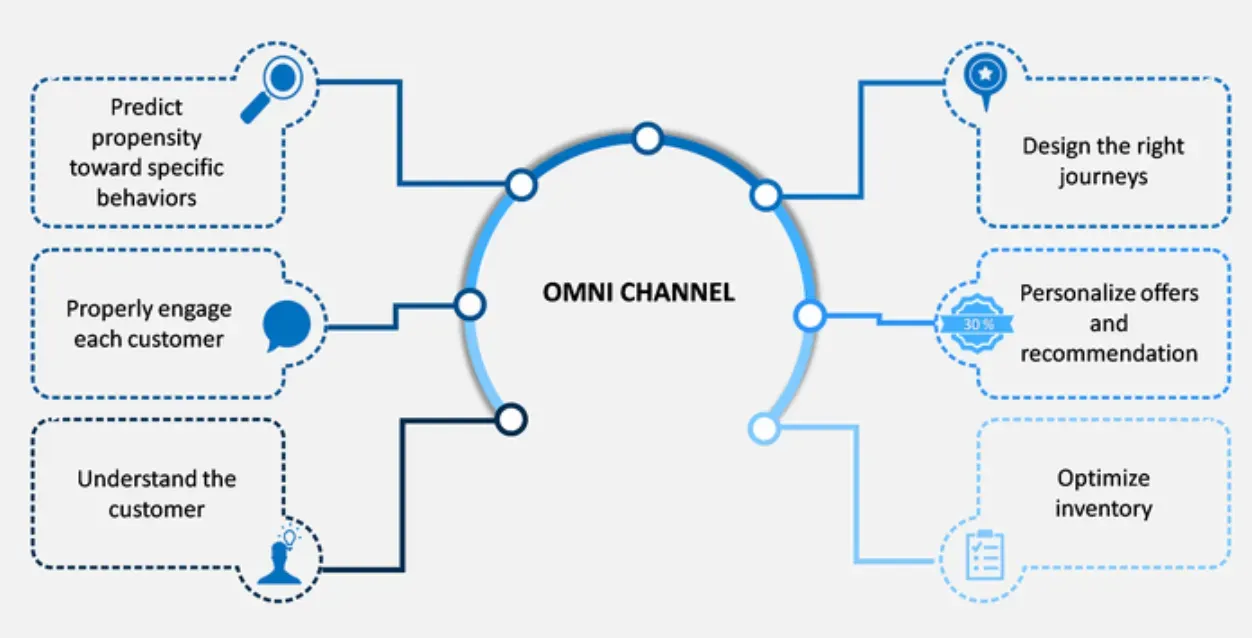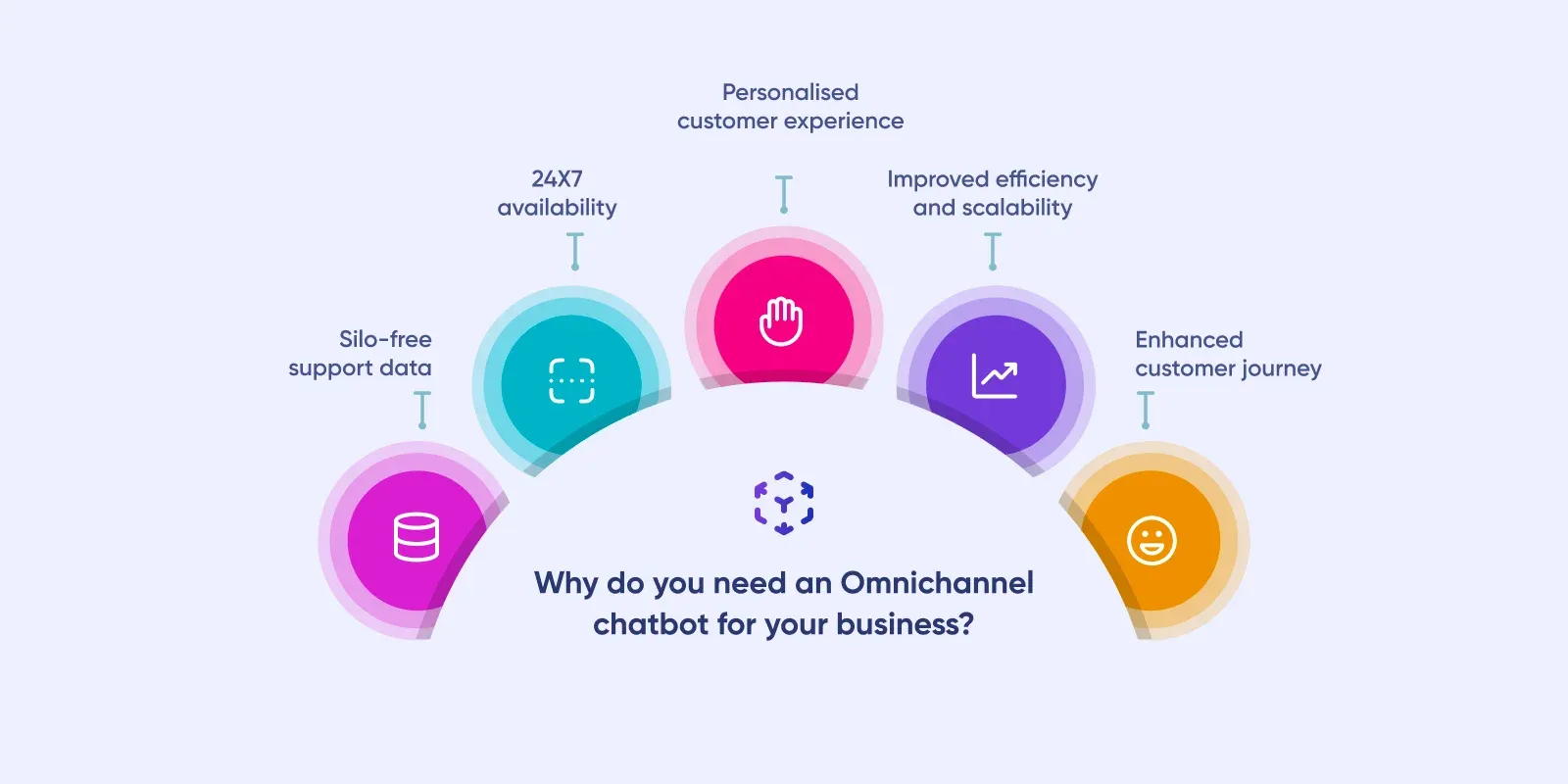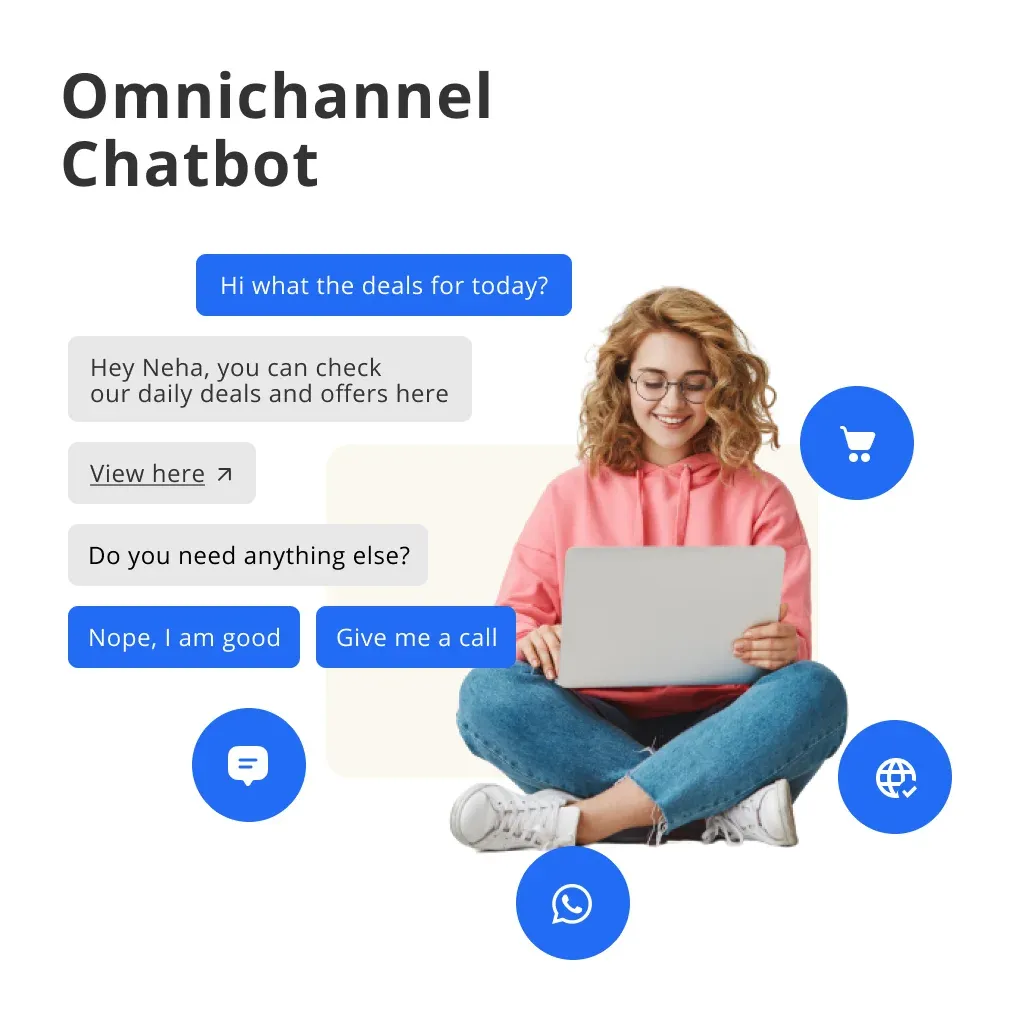What is Omnichannel Chatbot?
An omni-channel chatbot is a chatbot that interacts with customers across multiple channels, including websites, social media, messaging apps, and voice assistants.
The term "omni-channel" refers to the ability of the chatbot to seamlessly switch between these channels while maintaining context and continuity in the conversation.
In other words, an omni-channel chatbot allows customers to start a conversation on one channel and continue it on another without having to repeat information.
Importance of Omni-channel Chatbot in today's business landscape
Omni-channel chatbots are becoming increasingly important in today's business landscape for several reasons.
Firstly, customers expect businesses to be available 24/7, and chatbots provide an efficient and cost-effective way to provide this level of service.
Secondly, chatbots can improve customer experience by providing personalized and context-aware interactions.
Thirdly, by automating routine inquiries and tasks, chatbots can free up human agents to focus on more complex issues and provide better quality service.
Finally, omni-channel chatbots can provide valuable insights into customer behavior and preferences, which can be used to improve products, services, and marketing strategies.
Features of an Omnichannel Chatbot
An omni-channel chatbot should have the following features:
Multi-channel support
An omni-channel chatbot should be able to communicate with users across multiple channels, such as social media, messaging apps, and websites.
Personalization
An omni-channel chatbot should be able to provide personalized responses based on user preferences and behavior.
Natural language processing
An omni-channel chatbot should be able to understand and respond to natural language queries, improving the user experience.
Context awareness
An omni-channel chatbot should be able to remember previous interactions with users, providing a seamless and personalized experience across channels.
Analytics and reporting
An omni-channel chatbot should provide analytics and reporting features to help businesses track and optimize their performance.
How does an Omnichannel Chatbot work?

Understanding the communication process of an Omnichannel Chatbot
One of the main benefits of an Omnichannel Chatbot is that it can communicate with customers through multiple channels, such as text messaging, social media, email, and more.
When a customer interacts with an Omni-channel Chatbot, the Chatbot uses natural language processing (NLP) and machine learning algorithms to understand the customer's request or question. Once the Chatbot understands the customer's intent, it can provide a relevant response or solution.
For example, if a customer asks an Omni-channel Chatbot for help with a product, the Chatbot can access the customer's order history and make personalized recommendations based on the customer's previous purchases. The Chatbot can also provide answers to frequently asked questions, process payments, and schedule appointments.
Benefits of using an Omnichannel Chatbot for your business
The benefits of using an Omnichannel Chatbot for your business are numerous.
Firstly, it provides a 24/7 customer support service, which means that customers can get help at any time, even outside of business hours. This leads to increased customer satisfaction and loyalty.
Secondly, an Omni-channel Chatbot can handle a large volume of customer inquiries and requests simultaneously, which can significantly reduce the workload on your customer support team. This frees up your team to focus on more complex customer issues that require human intervention.
Thirdly, an Omnichannel Chatbot can help you gather valuable customer data and insights, which can be used to improve your products and services. By analyzing customer interactions with the Chatbot, you can identify common pain points and areas for improvement.
Finally, an Omni-channel Chatbot can help you increase sales and revenue by providing personalized recommendations and guiding customers through the purchase process. By offering a seamless and convenient customer experience, you can build trust and loyalty with your customers, leading to repeat business and referrals.
Examples of Omnichannel Chatbots
One successful example of an omni-channel chatbot is Sephora's Virtual Artist. Sephora is a cosmetics retailer that wanted to provide their customers with an easy way to try on different makeup looks without having to physically apply the makeup.
They created the Virtual Artist, which allows customers to upload a selfie and then try on different makeup looks using augmented reality technology. The chatbot is available on Sephora's website, app, and in-store kiosks, providing a seamless experience across all channels.
Different use cases of an Omnichannel Chatbot
Apart from retail, omnichannel chatbots can be used in a variety of industries, such as healthcare, finance, and travel.
For example, a healthcare provider could use a chatbot to help patients schedule appointments, ask basic health questions, and receive medication reminders.
A bank could use a chatbot to help customers check their account balances, transfer funds, and receive personalized financial advice.
A travel company could use a chatbot to help customers book flights, hotels, and activities, and receive personalized recommendations based on their preferences.
Best Practices for implementing an Omnichannel Chatbot

How to design an effective Omni-channel Chatbot
Designing an effective omni-channel chatbot requires careful consideration of various factors, including user experience, conversational design, and platform integration. Here are some best practices for designing an effective omnichannel chatbot:
Define your chatbot's purpose and audience
Start by defining the purpose of your chatbot and the audience you are targeting. This will help you design a chatbot that meets the specific needs of your users.
Use conversational design principles
Create a conversational flow that is intuitive, engaging, and easy to follow. Use natural language processing (NLP) to help the chatbot understand the user's intent and respond appropriately.
Personalize the user experience
Use data to personalize the chatbot's responses based on the user's history and preferences.
Test and iterate
Test your chatbot with real users and gather feedback to continuously improve its performance.

Tips for integrating an Omnichannel Chatbot into your business
Integrating an omni-channel chatbot into your business requires careful planning and execution to ensure a seamless customer experience across channels.
Here are some tips for integrating an omnichannel chatbot into your business:
Determine the channels you want to support
Identify the channels that are most relevant to your business and your customers, such as website, mobile apps, social media, and messaging platforms.
Integrate with your existing systems
Ensure that your chatbot is integrated with your existing systems, such as your CRM and ticketing systems, to provide a unified customer view.
Provide seamless handoffs between channels
Enable your chatbot to seamlessly hand off to a live agent when necessary, while maintaining context and history.
Monitor performance and gather feedback
Monitor the chatbot's performance and gather feedback from customers to continuously improve its effectiveness.
Conclusion
An omnichannel chatbot is a powerful tool that enhances customer experience, increases operational efficiency, and drives growth.
To implement an effective chatbot, businesses should design it to align with their brand, integrate it with existing systems, and optimize its performance.
A successful implementation can provide a competitive edge, leading to customer satisfaction, loyalty, and business success.

